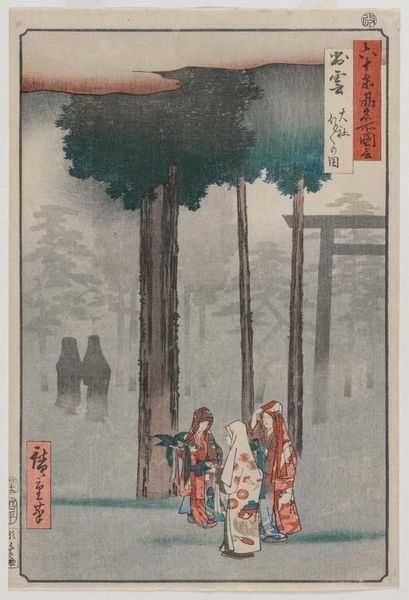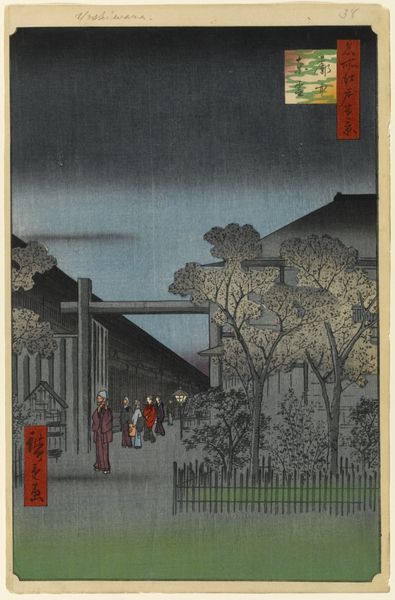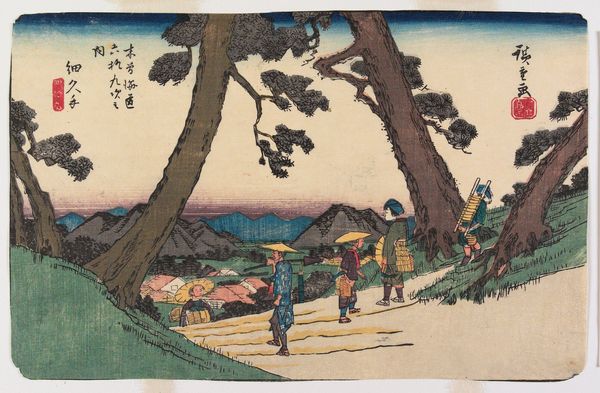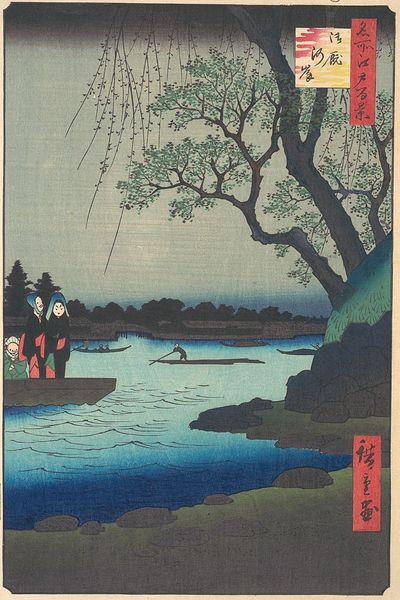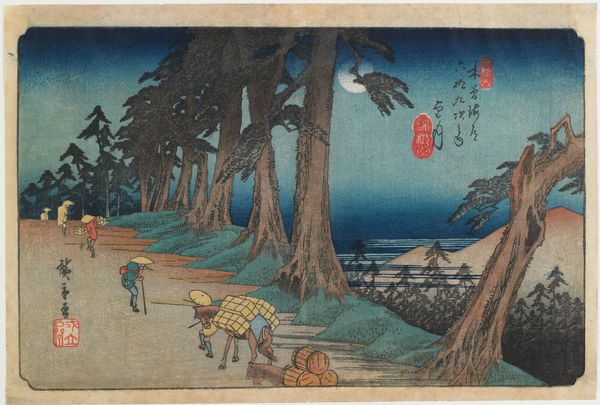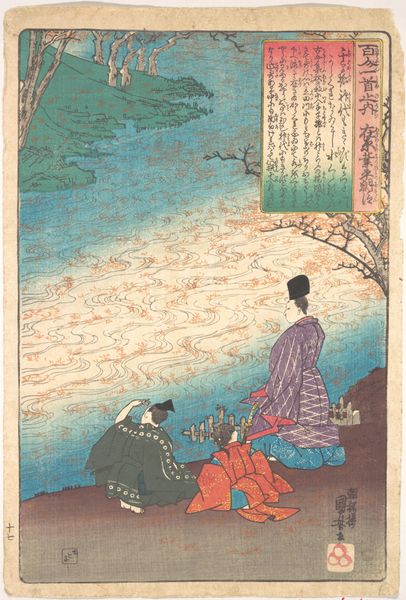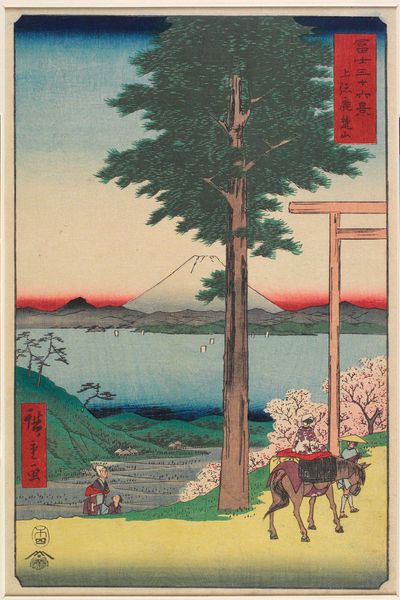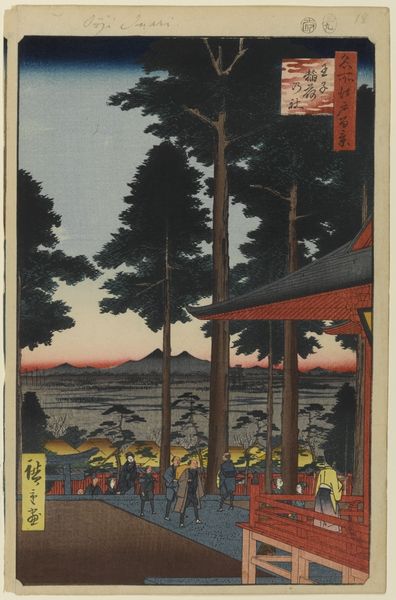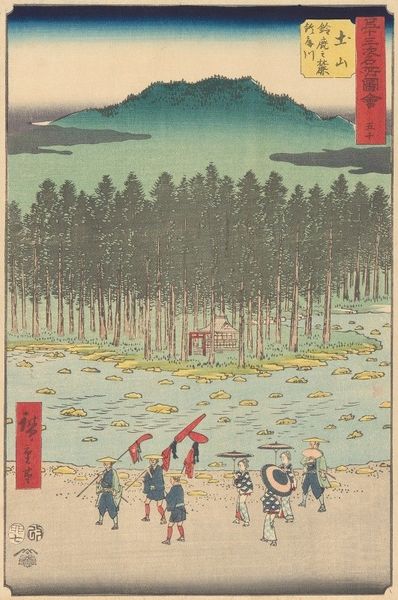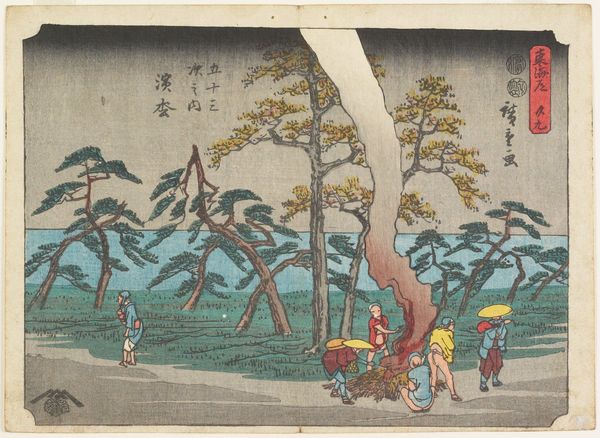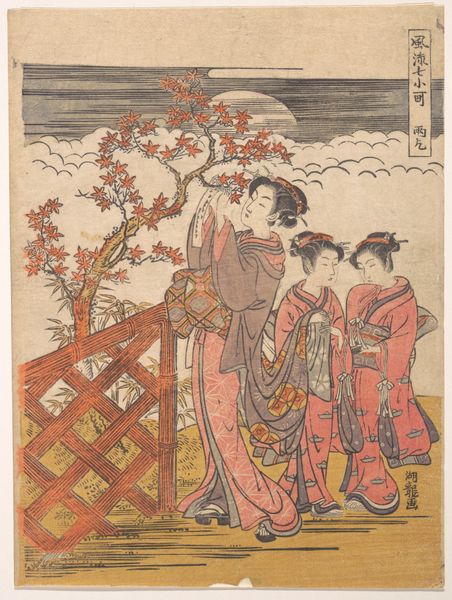
Scene of the -Hotohoto- Festival of Izumo Shrine Possibly 1853
0:00
0:00
print, ink, woodblock-print
# print
#
asian-art
#
landscape
#
ukiyo-e
#
ink
#
woodblock-print
Dimensions: 13 7/16 × 8 7/8 in. (34.1 × 22.5 cm) (image, vertical ōban)
Copyright: Public Domain
Editor: This woodblock print, “Scene of the -Hotohoto- Festival of Izumo Shrine,” is possibly from 1853, by Utagawa Hiroshige. There’s a stillness in the atmosphere; figures stand amongst towering trees, yet there’s very little sense of bustling festival activity. What social dynamics might be at play in this representation? Curator: That’s a keen observation. The perceived "stillness" is a critical entry point. How does Hiroshige’s print, created during a period of strict social hierarchies in Japan, navigate representations of gender and class through the festival? The women's garments, their arrangements, and the somber palette speak to a regulated and possibly romanticized vision. Consider the Ukiyo-e tradition of depicting courtesans and entertainers. How does this imagery either align with, or diverge from, those portrayals, and what can we interpret from that deviation about women's status, expectations, or limitations? Editor: So, by de-emphasizing the overtly celebratory aspects and focusing on these quieter figures, the print becomes less about the festival itself and more about... social performance, maybe? Curator: Precisely! Consider who is conspicuously absent. Where are the men? Are they implied, observing from afar? What power structures are inherently embedded within such visual decisions? Perhaps this artwork serves as a commentary on gender roles within cultural traditions and how identity is performed within public space. The 'Hotohoto' festival provides the stage, but Hiroshige spotlights societal constraints. Editor: That reframes how I see the piece entirely. It's not just a snapshot of a festival, but a subtle exploration of women's roles and hidden dynamics within that context. Curator: And recognizing those layered meanings empowers us to engage with art as a tool for social analysis.
Comments
No comments
Be the first to comment and join the conversation on the ultimate creative platform.
